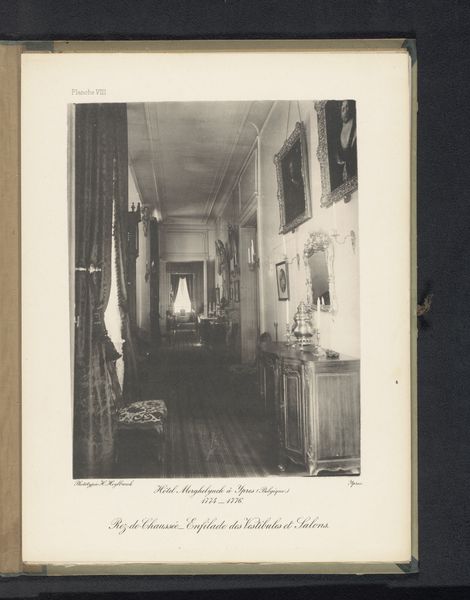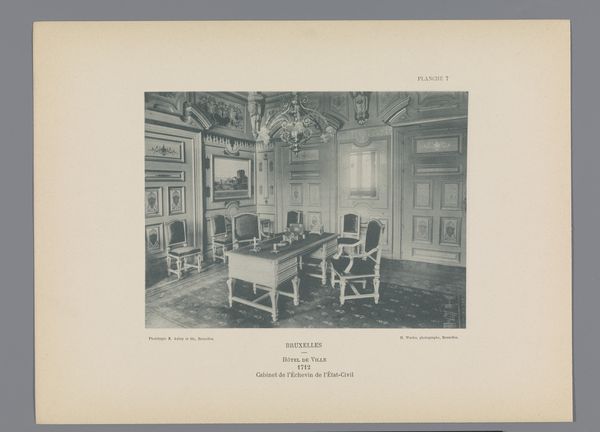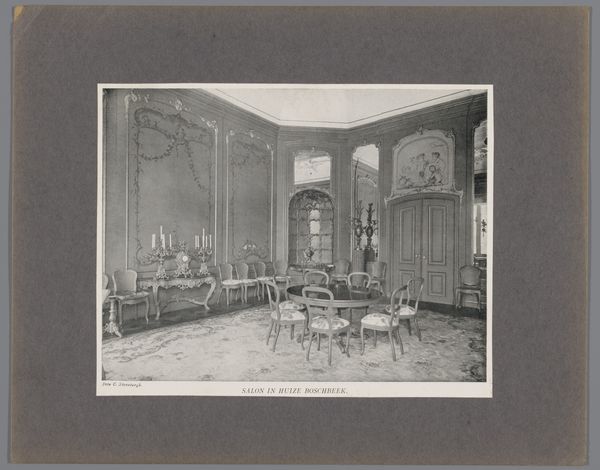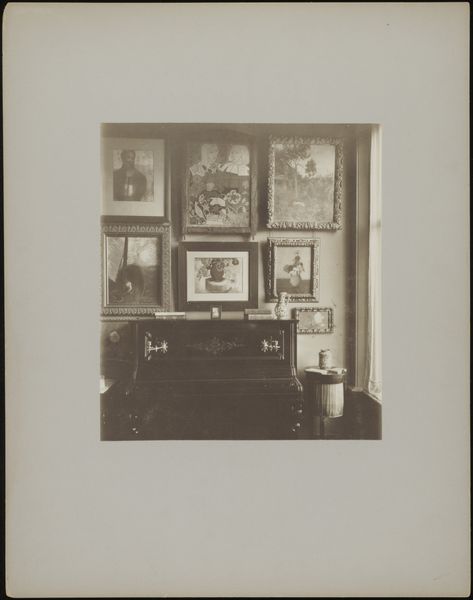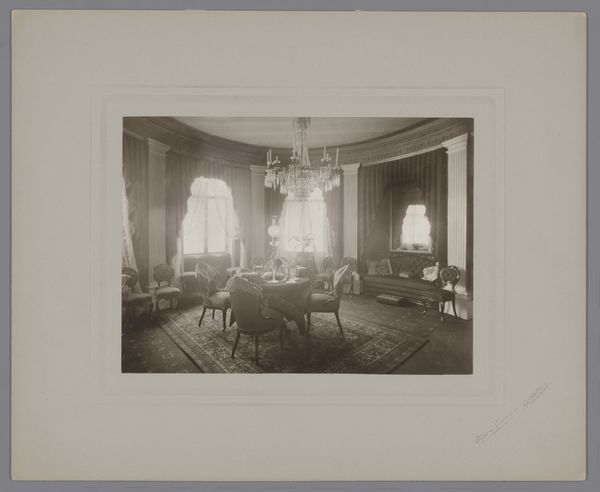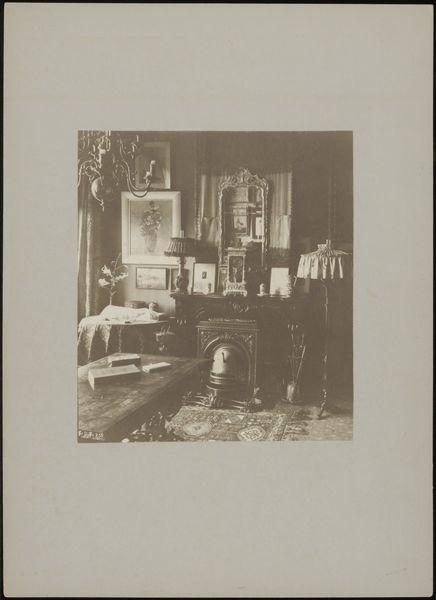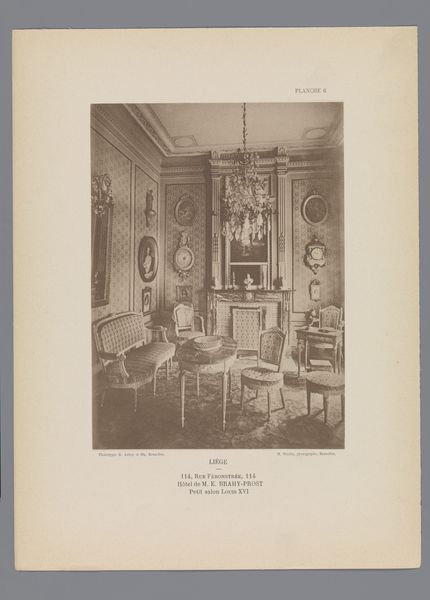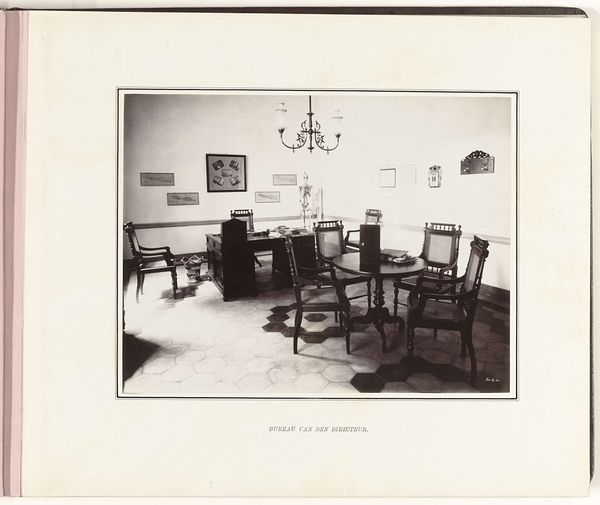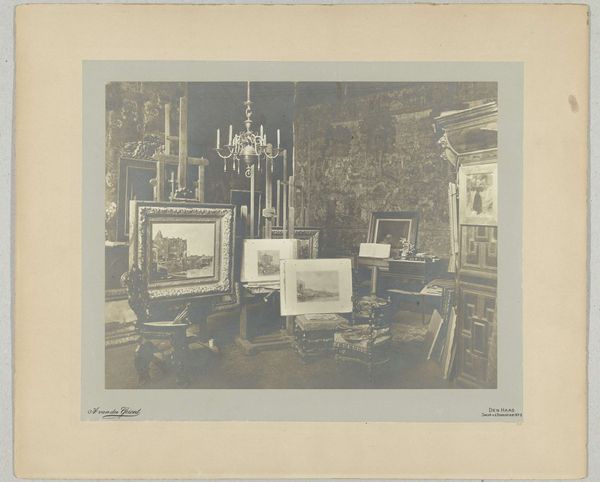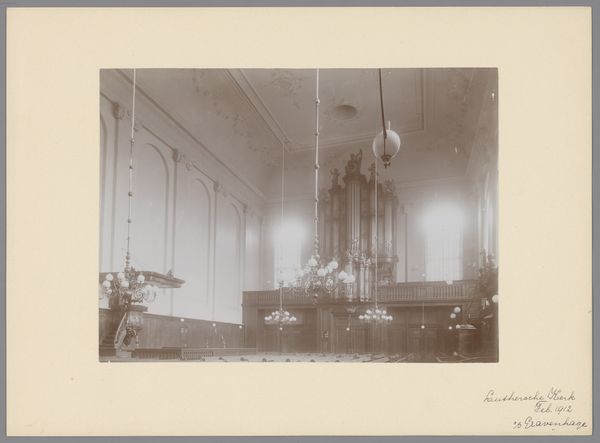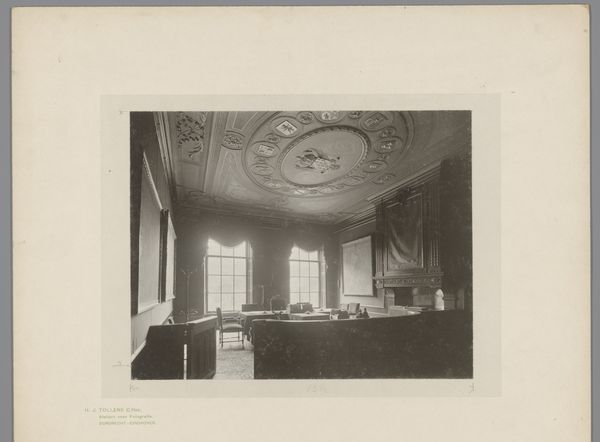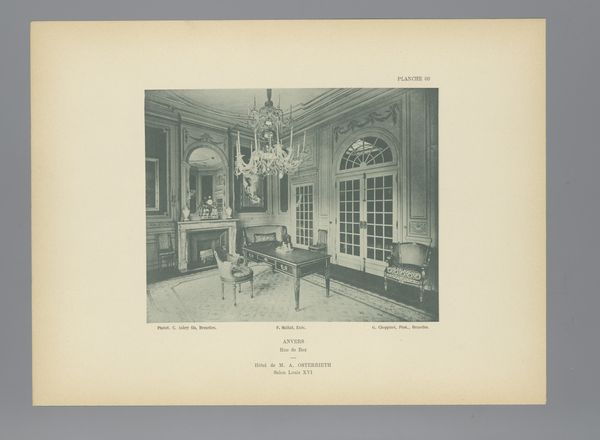
Wand van de eetzaal in kasteel De Wiersse te Vorden met een schouw en een bank c. 1885 - 1900
0:00
0:00
#
photo of handprinted image
#
table
#
light colour palette
#
pale palette
#
reduced colour palette
#
muted colour palette
#
fashion mockup
#
white palette
#
feminine colour palette
#
historical fashion
#
soft colour palette
Dimensions: height 122 mm, width 148 mm
Copyright: Rijks Museum: Open Domain
Editor: So, this is a photograph, taken by C. Steenbergh, sometime between 1885 and 1900. It depicts the dining room wall in Castle De Wiersse in the Netherlands, focusing on the fireplace and a bench. It feels very staged, a deliberate presentation of wealth and domesticity. How do you interpret this composition? Curator: What strikes me immediately is the presentation of domestic space as a reflection of social and gendered power dynamics. The carefully arranged objects, the muted palette—these elements speak to the construction of a particular feminine ideal. What stories are being told through these meticulously curated spaces, and whose voices are excluded? Editor: That's interesting. I hadn’t considered it as a deliberate construction. Do you see that as commenting on women's roles at the time? Curator: Absolutely. Think about the era. Women were largely confined to the domestic sphere. This image, whether intentionally or not, perpetuates that idea. The fireplace, traditionally a symbol of warmth and hearth, is presented almost as a monument. What does that monumentality say about the expectations placed upon women of that time? Editor: I see what you mean. The symmetry also reinforces that sense of control, right? Every element feels carefully placed and contained. Curator: Exactly! And consider the absence of people. It is a space designed for them, but they aren’t there, heightening the focus on the *objects* themselves as signifiers. I wonder, whose gaze is this photograph designed for? Is it for other wealthy families, for prospective suitors, or perhaps for posterity? And does the staging subtly reveal anxieties about maintaining this social order? Editor: Wow, I'm looking at it in a totally different way now. I initially saw a simple, if rather formal, interior. Curator: Precisely! And this demonstrates the importance of interrogating seemingly straightforward images, asking who benefits from their narratives, and uncovering the hidden ideologies they subtly convey. Editor: That gives me so much to think about in how we frame these artworks going forward. Curator: Indeed, these visual relics whisper stories about power and the social landscape of their time. By exploring these intersections, we deepen our understanding not only of the past but also of our present.
Comments
No comments
Be the first to comment and join the conversation on the ultimate creative platform.
